How to make a stork with your own hands for the garden: a master class on making a garden figure. Master class on making “Stork” crafts for decorating the territory of the kindergarten Stork from plywood
The beautiful and bright figure of a stork will add a touch of grace to the garden landscape, especially if it is made by hand. It may seem that making a stork is difficult and requires many years of practice in needlework, but the method of making it is simple and the materials are inexpensive. Such a sculpture will be an excellent addition to the local area and decoration for flower beds, lawns and garden plot, symbolizing wealth, prosperity and family comfort his owners.
How to make a stork for your dacha with your own hands: master class
A DIY garden stork is one of the favorite crafts of summer residents and gardeners, and there are many variations of its execution on the Internet, but the manufacturing principle is approximately the same in all cases, regardless of the materials used and the richness of the decor. Read how to make beautiful wooden signs for your home.
First of all, the head, neck, torso, wing frame and legs are made, which are connected with fastening tools.
The remaining time is devoted to the rather painstaking procedure of cutting, fringing and decorating the feathers - they will make up the plumage of the bird’s body, neck and tail. There are homemade options without using plastic bottles, but they are less common. Let's take a closer look at different options for making a stork in this article.
Materials and tools for garden figure
The stork figurine consists of a head, beak, neck, body, legs, wings and white plumage with layers of black feathers. All parts are fastened together with a furniture stapler and seated with universal glue.
The stork's body can be cut out from a wooden block of the required size, polystyrene foam or a 5-liter plastic canister.
- 1.5 and 1 liter plastic milk bottles;
- plastic bottles of 1.5 and 0.5 liters for kvass or beer;
- canister 5 l;
- scissors;
- glue;
- self-tapping screws;
- a piece of foam;
- corrugated tube;
- steel rods;
- frame mesh;
- thin wire;
- sandpaper;
- furniture stapler;
- red acrylic paint.
The stork's plumage is also made from transparent bottles, but then the plastic under the feathers should first be painted with white and black acrylic paints.
Stages of manufacturing from plastic bottles
Having prepared necessary materials and tools, you can start making components crafts. Find out about beautiful wooden fences with your own hands.

It is important that all parts of the stork’s body are proportional to each other.
Head
Using a sharp foam knife, the outline of the head with the beak is cut out, after which the surface is sanded and the edges of the beak are smoothed with sandpaper. If desired, the head can be painted with white paint - the coating will give the future product a rich white color and create an additional barrier from the sun, wind and rain.
The beak consists of 2 plates, which are attached to the head with self-tapping screws. For the beak of the dark plastic bottle cut off the neck and bottom, and cut the rest into rectangular plates. Triangles are cut from the resulting blanks, which will subsequently be the upper and bottom parts beak.

The plates are bent in the middle and screwed to the junction of the head and beak.
Paws
The legs are cut from 2 half-liter bottles with dark walls, after first cutting off the bottom. The fingers of the future bird are cut from the very edge to the neck of the bottle - you should get 3 in front and 1 in the back, and are bent outward.

Each finger is shaped into a long, sharp triangle using scissors.
Plumage
Processing blanks for feathers to give them a beautiful natural shape with feather veins is the most labor-intensive and time-consuming part of the work.
To cut out feathers, the bottom and neck of the bottle are cut off, and the cylinder of the bottle is cut into 6 equal parts - 6 feathers. They will be of different sizes: small for the body plumage, longer for the tail. Each feather must be given airiness by creating a fringe edging around the edges. He will tell you about metal forged gazebos for summer cottages.
Feathering on the neck can be done in 3 ways:
- cutting out even smaller plates than for the belly, decorating them with fringe and curling them with scissors;
- cutting off large plates the length of the neck and notching their edges;
- cutting off half the bottle and making deep sharp cuts in the resulting plates.

Each feather is a rectangular plate made from a plastic bottle with a rounded or embossed edge.
Frame
It is convenient to make the stork’s body from a 5-liter canister, the handle of which is first cut off. Then a mesh mesh is attached to the container, to which future feathers will be attached - it is bent and cut into the shape of a wing.
Next, you can begin assembling the main part of the product - a neck tube is inserted into the neck of the canister, and 2 holes are cut in the lower part, through which a long piece of thick rod bent in half is threaded - these are the legs.

The grids are fixed with wire or steel brackets on the canister.
Assembly and decoration
The stork is assembled starting from the head - it is connected with wire to a corrugated tube and additionally fixed with hot glue.
The feathers are secured with a stapler, starting from the bottom of the canister and then upward in layers. The tail is attached to the back of the figure. The feathering is also applied to the mesh in layers, starting from the outer edge, and fixed with wire. In this case, black feathers are located on the outer edge. You will get only about 6-7 layers of feathers. The outer row connecting to the tube is screwed with self-tapping screws.
Prepared plates with sharpened edges from bottle halves are wrapped around the neck.
The number of feathers depends on the location of the wings: the option under consideration is designed for folded wings, but when flapping, the wing mesh is covered with feathers on both sides and the back of the stork is also made.
After assembling the bird, you can begin to creatively design the craft.
The eyes can be bought ready-made in stores that sell parts for knitted and sewn toys, and glued with hot glue. For insert eyes, choose large black beads or balls. You can also paint the eyes - with simple black or colored paints to suit your taste.
If you used transparent bottles during the work, you need to paint feathers before cutting them, after wiping the surface of the coating with an alcohol solution.

The beak and legs of the product also need to be painted with red paint. Alternatively, you can wrap them with red tape.
What else can you make a stork from?
Craftsmen manage to create masterpieces from everything lying around in the garage, including, and also use leftover building materials after renovations. You can safely take note of several of these variations of garden storks - making them will not be more difficult than the previous option.
From polyurethane foam
Using this method, you can create a garden sculpture by turning it and giving the stork a realistic image. The “skeleton” of the product will be a steel frame - steel rods are welded to each other, and then other elements of the stork’s body are attached to them.
To make a stork you will need:
- 5-liter plastic bottle;
- polyurethane foam;
- steel rods;
- Styrofoam;
- dye;
- soil solution;
- scotch;
- rasp.
You need to put a bottle body on the frame, and attach sharpened pieces of foam plastic to each other with tape to the neck rod. Curly hips made of foam are secured in the same way.
Even with the use of waterproof plywood, the possibility of the sculpture getting wet during the cold season increases, so it is recommended to store it indoors until the weather warms up.
To make a stork you will need:
- plywood;
- plastic bottles with white and dark walls;
- hot glue gun;
- rods;
- jigsaw;
- self-tapping screws;
- scissors;
- screwdriver;
- furniture stapler;
- red acrylic paint.
It is advisable to first apply the elements of the body and wings on paper, creating a “pattern” of the parts before cutting them out on a sheet of plywood. The wings are screwed to the body with self-tapping screws. The legs are made of steel rods and are attached with staples to sheets of plywood that serve as the body. Sheets of plywood are also used for or.
Feathers are created from bottles, and each plate, in turn, is processed along the edges with scissors until an airy fringe is obtained. The plumage is applied to the entire surface of the stork, starting from the back: first, black feathers are laid out, and then white ones, from which the bird’s tail is also created.

Each workpiece is sanded along the edges and the surface is primed.
- a layer of red paint is applied to the plywood beak;
- You can draw the eyes yourself.
The rods of the paws can be sharpened from the bottom edge so that they can easily fix the product in the soil.
From foam plastic
The foam stork is a monolithic structure, lightweight and easy to manufacture.
To work you will need:
- foam sheets;
- steel rods;
- universal glue;
- scissors;
- saw;
- furniture stapler;
- sandpaper;
- acrylic paint black and red.
First of all, the legs are made - the lower edges of 2 steel rods are sharpened, and the upper edges are bent for subsequent fixation in the foam body.
The main creative work on such a stork consists of creating the correct foam blanks, because the finished bird will consist entirely of it. The body, head and neck are drawn in foam and cut with a saw. He will tell you about plastic barrels for watering the dacha.
Iron rods are stapled into the stork's body, its surface is sheathed with a layer of foam plastic for volume, and wing blanks are glued on top. The neck and head are mounted on a rod.

The stork's beak is painted red, and it is better to make inset eyes from beads or balls - this way the figure will be more expressive.
Next, the final modeling of the figure is carried out, giving it smooth and beautiful features with sandpaper and a knife. This is the case when you don’t have to make feathers for the bird - the embossed plumage can be cut directly on the body of the product, simply accenting the edges of the wings with black paint.
How to make a nest with a stork for the garden
The classic composition with storks in the nest traditionally symbolized cozy home with a large family among the East Slavic peoples, indicated the fertility and cordiality of the owners. Installing storks in a nest on your own property, flowerbed, roof of a house, or area for recreation with children will help not only decorate the area, but also show guests that the owners are jacks of all trades. He will tell you about outdoor country washbasins.
Old wheels from a bicycle, cart, trailer or wheelbarrow will fit under the frame of the nest. You can weave a nest from bushes and live or dry branches, securing the entire structure with steel wire and installing it on a special platform consisting of X-shaped pads.
Video
How to make a stork from plastic bottles, watch this video:
Conclusion
- The most labor-intensive and work on garden stork consists of creating its plumage - each feather must be worked on by hand, giving the edges a jagged or fringed shape so that they look like natural bird feathers.
- Feathers from transparent bottles should be painted white and black so that they imitate the natural plumage of a stork.
- Before painting the feathers, they need to be wiped off from dust and rubbed with an alcohol solution so that the paint goes on evenly.
- The easiest way to make a stork is to make it entirely out of foam and sharpen it with a knife and rasp to the desired shape; the simplest wing without a frame is made from a piece of plywood, which is screwed to the homemade body with self-tapping screws.
- The body with a neck can be made from a plastic 5-liter canister with a cut off handle and neck, into which a corrugated tube is then inserted.
- You can make a garden sculpture from the remnants of building materials lying around after renovation, and it will cost almost nothing. Additionally, you will only need to buy acrylic paints in order to draw the eyes and color the feathers.
And your bird can become the founder of a whole bird family in the country. For example, a stork can open a bird gallery, but a homemade flamingo, peacock, heron will continue it... Fantasy is limitless! Some craftsmen simply paint the plywood blank and cover it with varnish. The result is a unique painting on wood, where fantasy images are combined with your own creative abilities.
Your garden will truly become a place of miracles.

What else can you make a stork from?
We list only the most popular options:
- car tires (perhaps the most folk version);
- forged parts;
- plastic lids (but this is jewelry work);
- tree;
- shells;
- disks.
The simplest option is a plywood stork. You simply make a template with your own hands, according to which you cut out the future sculpture. Paint your bird of happiness on both sides with acrylic paints. Or with the ones you have, covering the top of the pattern with construction varnish.
DIY garden decor (video)
A stork in the country can be just the beginning of your creative experiments. As practice shows, appetite comes with eating: even people far from artistic work get the taste, and over time, other interesting characters appear on the site. And this is great, they delight not only the owners, but also the guests, who are becoming more and more numerous in connection with such dacha art.
Reviews and comments
Oksana Vladimirovna 20.12.2015
Interesting idea. But is there enough talent? And I’m also worried that the structure won’t be stable. If you make a body from a plastic bottle, then you will probably need to weigh it down with something. So that the wind doesn't blow it away.
Artem 03/03/2016
I made a pig using a 5-liter plastic bottle, although they are mostly just made from bottles, cutting out the necessary shape, but I still had polyurethane foam and covered the bottle with it. The pig came out fat and looked natural. Only to smooth out the foam in the form of leather, I used gloves and lubricated it with oil, so the foam practically did not stick. Painted the top and it was done.
Sergey 06/14/2016
I also make garden sculptures using plastic bottles, but I prefer to cover them with plaster and give them any desired shape. Quite easy and the costs are minimal. Then I simply paint it with any paint and the figure is ready.
Igor 02/01/2017I also want to make a couple of storks :) (I have two adults, but the price is exorbitant) There are pieces of hard foam, but it’s scary to cut - I’m not an artist - I’m an electrician :) 😮 . But I think I’ll decide anyway... I’ll try to provide the result. By the way, the cart wheel was already sculpted from foam plastic...
Add a commentOlga Druzhinina
Will need:
1. Empty five-liter canister.
2. Steel rod for legs (we took an old arch from the gym and flattened it).
3. Steel wire for the frame.
4. Polyurethane foam 3 cylinders.
5. Disposable spoons (fortunately there were a lot of them in the garden after the oxygen cocktail).
6. Two simple 1.5 liter bottles (for neck).
7. 5-liter water container (for wings).
8. About 15 white one and a half shirts from kumiss or ayran (wings and tail)
9. 2 liter iron cans (we found it from a beer bottle) for the beak.
10. Stationery knife with a replaceable block.
11. Red tape for legs.
12. Red paint for the beak and black paint for the feathers.
13. Glue-liquid nails.
14. Copper wire for attaching feathers to the wing and tail.
15. Several screws for fastening the wings and tail.
Description of work:
They took a steel arc (I asked my parent, he welded a small plate to it and screwed a canister onto it). I cut off a corner of the canister and twisted a steel wire into the shape of a neck and head, inserted it into the canister and foamed it with polyurethane foam. I waited until it grabbed and held.
then I cut off one and a half lengths from the neck and bottom (I took only the flat part) and, having put it on the neck, began to foam both the body and the neck. I did the neck in several stages, waiting for the previous part to dry.



Then I foamed the entire structure.

After complete drying, I cut off everything unnecessary, giving the structure an outline stork.

I cut everything off the spoons and started gluing it from the neck.

Separately, I cut a 5-liter bottle in half, formed wings and attached pre-prepared blanks using wire and sewing to the wings (from long to short). Then I attached the wings to the structure using long self-tapping screws.

Next, I formed a beak from iron cans and attached them using the same self-tapping screws. Then I painted it with red paint. I wrapped my legs with red electrical tape, more around the knees, and my eyes with a painted spoon.




A small touch from a can of black paint and the stork is ready!

It's very easy to make from plywood. To do this, you don’t need to look for space in the garage or rent a storage room: just a spacious kitchen and a mother-in-law who is a big fan of crafts.
To make the process go quickly, purchase a six-millimeter sheet of plywood and paint from the building materials market, which are used to update the facade of the house. If you don’t have enough tools, ask a neighbor or rent one. A DIY stork for the garden is an interesting craft, but a little capricious. Patience is the main condition when performing work, otherwise you can drag out the work so much that they would rather buy metal figurines than wait for inspiration to strike you.
To make a stork for the garden with your own hands in a matter of days, follow these tips:
- The piece of plywood should be rectangular in shape, with sides of 850 and 580 millimeters.
- It is better to use white paint. Buy black and red dye for it. With proper dilution, you will get an exceptionally long-lasting color.
- Don't shy away from waterproof varnish: it will help protect your product from precipitation.
- Half a meter of sandpaper is enough.
- It is better to use an electric jigsaw.
- Brushes are at your discretion.
Using the help, transfer the outline of the stork onto the plywood, if the design is already applied to a thin sheet of newspaper, plug in the power cord of the jigsaw and carefully cut out the body of your stork. To “put the bird on its feet,” you can cut out a stand from the remains of plywood.
Sand the edges with pieces of sandpaper, cover with the first layer of varnish, and let dry. Now you can take up the paints. Prepare 3 types - red, white, black. The first tone is on the nose, the second on the body and up to the middle of the wing, the third is applied to the free places. Leave for 8 hours. Check the paint for strength and apply another layer of varnish on top.
You can use thin reinforcement on your legs. Attach it to the body and stand, cover it with red, deepen the places for the eyes with several blows with a hammer, fill the potholes with black and leave for a day. If there is no reinforcement, then you can use the old Stork for the garden with your own hands and pave it on the roof ridge if desired, if you screw the body to a mop, the wide part of which goes under the rafters, where it is nailed.
What else can you do for your garden with your own hands? Fly agarics made from hemp and basin, animal figures from cans, a unique bed in pink tones.

But the stork is somehow closer to the heart of a Russian person. You can also make this noble bird out of plaster and clay, and it requires one plastic bottle, 500 grams of plaster, gauze bandages and metal rods that bend well, 3 spray cans
Have you ever imagined, dear readers, that it could be used as...a material for making art objects. Although it may not be art as such, in its literal sense, it is quite possible to make a decoration for the garden - a small sculpture. In fact, polyurethane foam is unusually plastic, hardens quickly and is easy to process - why not a material for creativity?
Today I will tell you how to make polyurethane foam stork sculpture to decorate your garden or summer cottage. You need very few materials, and they are very cheap. If you pay attention to how much garden sculptures cost in hardware stores, you will realize that the price of a couple of foam cans is not commensurate with their cost. Besides, our stork will turn out much better. So let's get started.
Stork frame
To begin with, we will select a suitable body for the stork - a frame on which the foam will be sprayed. A plastic water canister with a capacity of 5 liters will do just fine. We make the stork’s neck from wire, and to add volume, you can attach strips of foam plastic to the wire. The stork's legs can also be made from wire, and the nose and head can be cut out either from foam plastic or wood - whichever is more convenient and preferable.


Making a sculpture
After making a simple frame, we begin to spray foam on our sculpture - we do this carefully, imagining the contours of the finished stork. To make it easier, print out a large bird. If the foam does not lie as you intended, no problem - after drying, the excess can be easily removed with a knife. By the way, if you wish, you can use real bird feathers for the tail - who knows, maybe you will make a peacock instead of a stork. After the foam has dried and finished with a knife, we paint the sculpture with regular paint. acrylic paint, fix it in place in the garden, and invite your friends to appreciate your creative genius. Good luck!

 Are there mites in Pitsunda? Ticks in Abkhazia. Pitsunda pine grove
Are there mites in Pitsunda? Ticks in Abkhazia. Pitsunda pine grove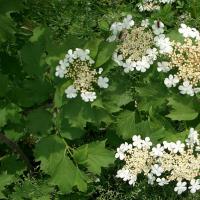 Red viburnum (Viburnum opulus L
Red viburnum (Viburnum opulus L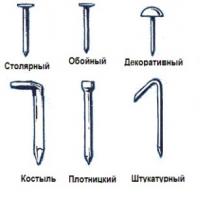 Nail Making Business How to Make Copper Nails
Nail Making Business How to Make Copper Nails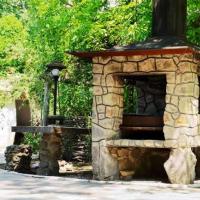 Stone brazier: material features and manufacturing options
Stone brazier: material features and manufacturing options Blackroot medicinal cultivation
Blackroot medicinal cultivation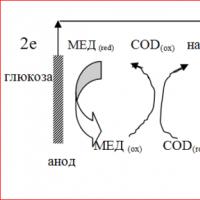 Fuel cells: a glimpse into the future
Fuel cells: a glimpse into the future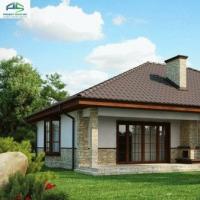 Houses with a hipped roof projects
Houses with a hipped roof projects